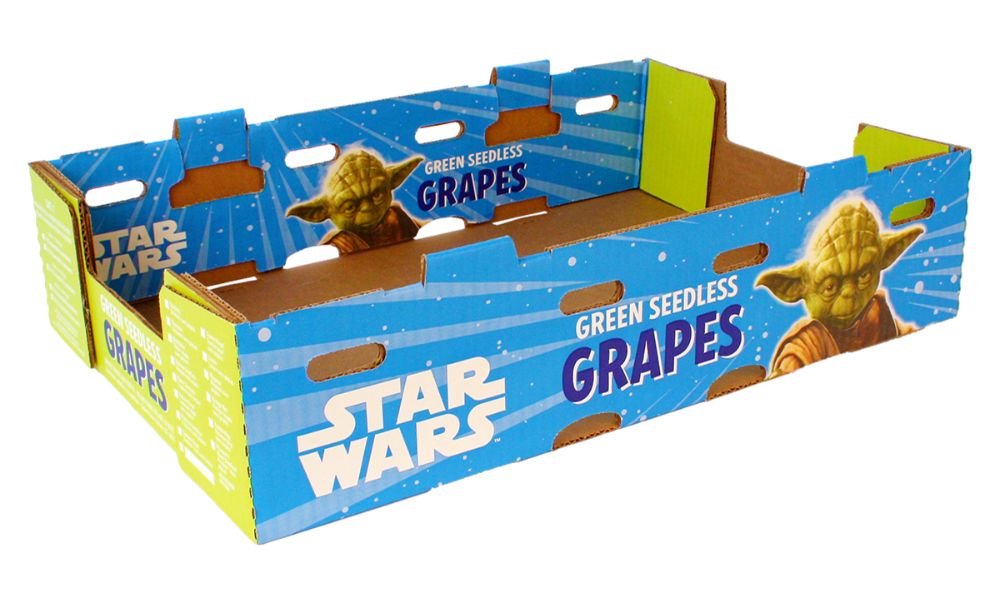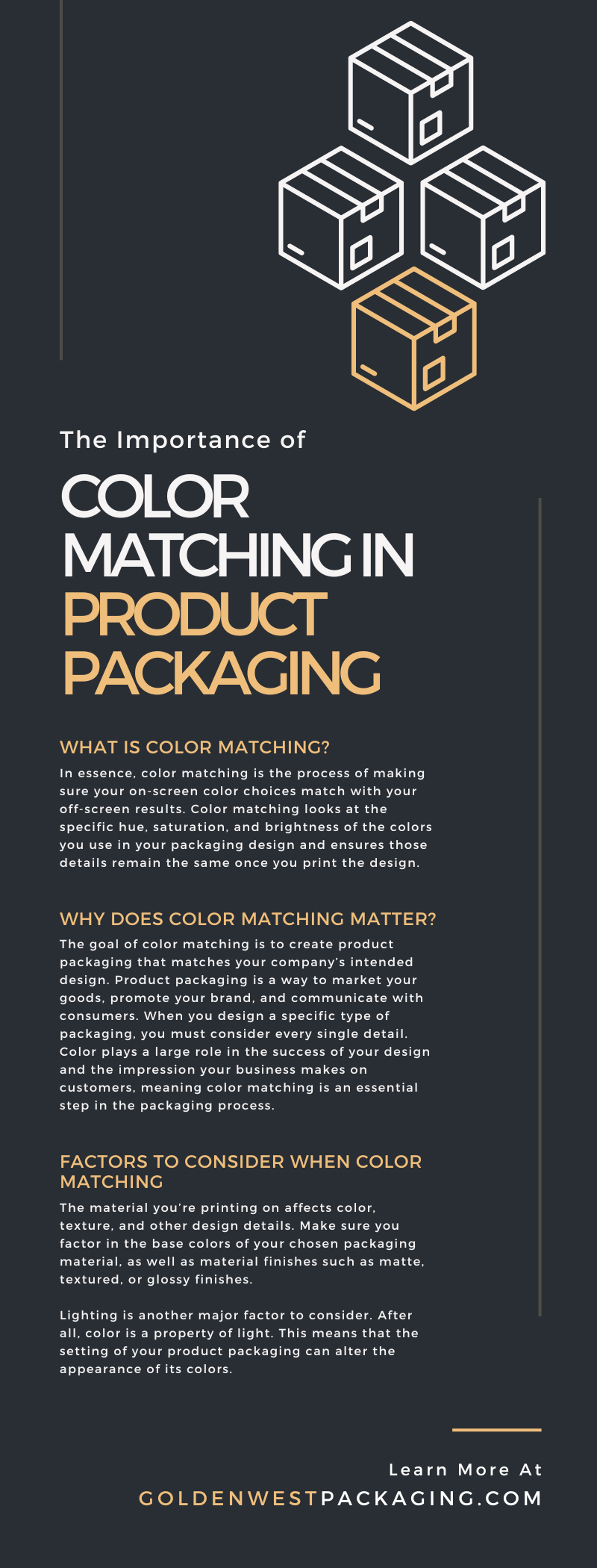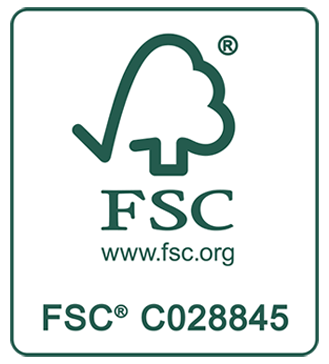
Packaging is the first impression your product makes. The colors you choose for your packaging design play a significant role in how that package looks in customers’ hands. As such, you want the printed colors to be as clean, vibrant, and accurate to your design as possible. Translating specific color shades from a digital design to a physical product requires many stages and changes. The last thing you want is for those colors to get lost along the way, which is why your business needs color matching.
Color matching is an essential process in product packaging design and printing. Before you turn your designs into a physical reality, make sure you have a dependable color-matching process that can preserve your exact design and deliver the results you want. Read on to learn the importance of color matching in product packaging, how the color-matching process works, and what you can do to achieve the best packaging for your products.
What Is Color Matching?
In essence, color matching is the process of making sure your on-screen color choices match with your off-screen results. Color matching looks at the specific hue, saturation, and brightness of the colors you use in your packaging design and ensures those details remain the same once you print the design.
Without color matching, you may face last-minute surprises and alterations to your design. This can turn into a major issue if your brand colors are inaccurate or if various shades of your design clash with each other. By incorporating color matching into your business’s packaging printing process, you can eliminate surprises and always get the results you want from your final product.
Universal Systems Create Universally Accurate Results
Communication is a key part of color matching, especially if you’re partnering with other companies during the design or printing stages of your product packaging manufacturing process. Many businesses use industry-standard tools to convey exactly what they want; for example, many digital designers use the CMYK color system when creating custom designs.
Another industry-recognized standard is the Pantone Matching Standard (PMS), which designers and manufacturers across the globe use to create and communicate colors accurately. The PMS features a comprehensive range of colors and uses a numbering system to easily identify specific colors.
Using universally accepted color systems or catalogs makes it easy to communicate the precise colors you want in your design. The more accurate your communication is during design and other pre-manufacturing processes, the more success you’ll have once your product packaging is on store shelves.
Why Does Color Matching Matter?
The goal of color matching is to create product packaging that matches your company’s intended design. Product packaging is a way to market your goods, promote your brand, and communicate with consumers. When you design a specific type of packaging, you must consider every single detail. Color plays a large role in the success of your design and the impression your business makes on customers, meaning color matching is an essential step in the packaging process.
A lot of thought goes into choosing the right colors; different colors evoke different emotions. When combining colors, you must pay attention to how various shades contrast with each other to create clear text and images. Specific colors can also hold pre-existing meaning or context, such as the colors you use in your brand’s logo.
Even slight color differences can throw off your entire design and create packaging that looks completely different from what you want. Because product packaging is such an integral part of selling goods and promoting your business, color matching is a necessary step in achieving your desired results.
Factors To Consider When Color Matching
Many aspects can affect the accuracy of packaging colors throughout the printing process. Two main factors to pay attention to are materials and lighting.
The material you’re printing on affects color, texture, and other design details. Make sure you factor in the base colors of your chosen packaging material, as well as material finishes such as matte, textured, or glossy finishes. Remember that even transparent materials tend to have some form of natural color; factoring that natural color into your color-matching process helps maintain consistency from beginning to end.
Lighting is another major factor to consider. After all, color is a property of light. This means that the setting of your product packaging can alter the appearance of its colors. For example, a specific shade of teal might look mostly blue in an indoor setting, but that same shade might lean more toward green in outdoor environments.
You can’t control the lighting once your products are out the door, but you can predict which kind of lighting your products will be in. For example, if your company’s main distributors are supermarkets, you’ll want to color match toward artificial lighting so your products look their best while on grocery store shelves.
Tips for Achieving Accurate Colors
Now that you understand the importance of color matching for your product packaging, you can incorporate the following tips and techniques into your printing process to create the most accurate color results possible.
Take Advantage of Soft-Proofing
Many digital design tools have features that simulate the way your packaging will look in its final printed form. These are known as soft-proofing tools, and they’re a useful way to review your color choices before your packaging goes to print. Using soft-proofing, 3D modeling, and other similar tools during the design stages helps you maintain an accurate vision as you move through the stages of product packaging creation.
Ask for Physical Samples
In addition to digital proofs in the design stages, it’s important to review physical samples of your product packaging. A physical sample puts the product directly in your hands so you can feel 100 percent confident about your design, colors, and more before finalizing your packaging. At Golden West Packaging, we provide pre-production samples so you can know exactly what you’re getting before you begin the mass production stage.
Work With a Packaging Partner You Can Trust
Working with a reliable packaging partner is key to achieving the expert results you want. When you need high-performance custom packaging that accurately reflects your business’s design, turn to the team at Golden West Packaging. As a leader in custom packaging solutions, we have the resources and knowledge you need to make the most of your product packaging. Learn about our work as a corrugated box manufacturer, packaging partner, and so much more when you collaborate with the Golden West team today.




